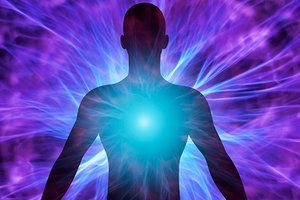Whether you accept it, avoid it or live somewhere in between, insurance coverage has become a defining issue for our profession. Patients increasingly expect to use their benefits, practitioners want to be compensated fairly for their time and expertise, and the system itself remains – at best – fragmented. The encouraging news is that coverage has expanded in meaningful ways. The challenging news is that reimbursement, across the board, remains inadequate.
Understanding the Yi
For years, the yi spirit was one I never fully understood; the only connection I was able to make for it was that it was linked to worry and overthinking. How, why, and what to do about it was still a fleeting understanding for me.
As I've begun to work more with the spirits and learn to understand and listen to them, the understanding of the yi has also become deeper and more detailed. The common cluster of symptoms of a yi disturbance is incredibly relatable for people, and it's a unique cluster that isn't often noted in other healing paradigms.
My Top FIve Signs of A Yi Disturbance
- Obsessive thoughts and overthinking
- The inability to take action on our ideas
- Disordered eating and/or body image distortion
- Muddled thinking
- People pleasing – helping others at our own expense

I find this cluster of symptoms to be extremely interesting because they are also so commonly found together – it's a general presentation of using our qi for others at the expense of our own needs, which can result in the remainder of the symptoms, such as being stuck and unable to take action, overthinking and worry, and issues with food and our bodies. As our qi becomes depleted, there simply isn't enough remaining to truly live a vibrant life, and this decline takes place.
With the yi, it's also interesting to note that the symptoms caused by a yi disturbance can also create a yi disturbance. It's kind of a "chicken or the egg" paradox, but the good news is the way to heal and re-integrate the yi doesn't require knowing what came first.
The Value of the Yi
Our yi spirit is the center point between Heaven and Earth; it connects and helps facilitate communication between the more yang spirits of the shen and hun, and the more yin spirits of the po and zhi. Just as the spleen and stomach help us digest our food, the yi helps us digest our reality; it helps us to acknowledge, assimilate and integrate the experiences we have in this lifetime.
In a healthy state, the yi is about setting intentions; it takes the insight of the shen, and the ideas and plans of the hun, and sets the intention for the po and zhi to initiate into reality. If the yi is detached, we may never get started on our ideas because we aren't energetically signing the contract to get started.
Recognizing & Treating Spiritual Detachment
Recognizing spiritual detachment in clinical practice can be difficult, because it often takes a deeper understanding of the patient than just one or two initial meetings. As we learn more about their history, particularly emotional history, we can begin to understand which spirits may be affected and then adjust our treatment plan accordingly.
When patients are not responding to typical treatments in the way we expect, this is usually an indicator that there is a spiritual component. Asking about childhood traumas, significant events and parenting styles can also be interesting clues for our diagnosis.
For the yi, the patient may have been exposed to alcoholism in early childhood; had caregivers who were in a codependent relationship (typical in alcoholic households); or had caregivers who criticized their body, put an emphasis on looks or created a disordered environment around food, such as forcing a child to clean their plate when they weren't hungry, using food as reward or punishment, etc.
Healing the yi revolves around harmonizing and tonifying the center. The yi is the center point of the spirits, so we need to create a space for the yi and earth element to thrive in. This may include improving digestion, tonifying qi and helping the patient create healthy boundaries.
For acupuncture treatment we will work on the earth element. Points such as Stomach 36, Spleen 6 and Stomach 25, the Celestial Pivot, are all excellent options to build the center. Bladder 49 is the hut of the yi and this point can be a subtle harmonizer to help the patient make a connection with their true purpose.
Self-Healing the Yi
Self-healing principles are about making small changes consistently, keeping promises we make for ourselves, learning to set boundaries and say no, and healing our relationship with food. The key here is small bites – these aren't promises like hitting the gym every day, but small promises such as, "I will make my bed every day." This type of small promise is something we can surely do, and the act of doing it helps to rewire the brain and invite the yi back to the center again, because we are no longer denying our own needs.
Learning to set boundaries is another frightening and potentially difficult act. It may be useful to work in conjunction with a therapist to help with this; however, small bites is still the principle. Set a small boundary around things that aren't "important." This helps us build the muscle to set boundaries when things are more important to us.
Eating with presence and awareness is perhaps the most important aspect of self healing for the yi, especially if we've had issues with our relationship with food in the past. Starting a practice of having more awareness around food (e.g., being fully present with your meal by turning off the TV, internet and phone calls during meals, and taking a moment to have gratitude and bless your food), are great ways to begin healing this relationship.
Restoring the Spirit Power
As the yi heals and reintegrates, we will notice an increasing self-confidence, particularly around the ability to set boundaries or say no. Our relationship with food and our bodies will begin to improve, feeling less reactive or attached to this aspect of our being; knowing that our inherent truth is not rooted in being a body, but in being a spirit. We will be better equipped to follow through on our promises to ourselves, and can manifest our ideas into intentions to set forth into the world.



